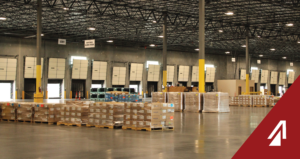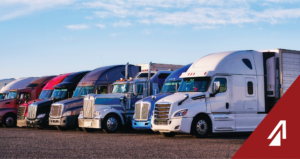Since its rollout, December 18, 2017, the trucking industry has been abuzz about the ELD mandate and its effects on drivers themselves, motorist safety, and companies’ supply chains. Many argue on either side as to whether the mandate is a help or hindrance to the industry and society, as no definitive evidence is available from the Phase 1 and early Phase 2 deployment to support either side. Still, with the Phase 3 final implementation date rapidly approaching (December 16, 2019), the ELD mandate has seen both refinement and reporting that could shed light as to the mandate’s effect. Here is what is new during the mid-late Phase 2 deployment.
Quick Review: What Does the ELD Mandate Say
According to the Federal Motor Carrier Safety Administration (FMCSA), the ELD Mandate is a congressionally mandated program to help make drivers safer. It also improves data tracking and sharing for hours of service (HOS) requirements. Prior to the mandate, many carriers would exceed their HOS limits and fabricate their information on paper logs.
With the Electronic Logging Device (ELD), the device is hard-wired into the truck to record when the vehicle is turned on and off automatically. The data is tamper-proof and easily sharable with the driver’s parent company or law enforcement. FMCSA says, “The ELD final rule does not change any of the basic hours-of-service rules or exceptions,” but they improve enforcement of those rules. The mandate will impact approximately 3 million drivers and all commercial motor vehicles manufactured after 2000.
So far, the actual effect of these devices is not known. Proponents on the pro-ELD side say that they increase safety by enforcing HOS rules more strictly – ensuring drivers receive the proper rest. Others say the ELDs limit driver earning potential, and the industry need not be regulated so thoroughly – drivers know what they need individually and can handle themselves. These also cite training and new rest facilities as areas that could provide better benefits than the ELD mandate.
Until more definitive proof is available, government entities are progressing with the current mandate and will update it as needed. Several trucking industry organizations are not prepared to wait on the government and have lobbied them for swifter action.
ELD Mandate Exception Bills Have Been Submitted to the Government
Phase 2 has seen marked opposition to the ELD mandate. Organizations like the Owner Operator Independent Drivers Association (OOIDA) have submitted petitions to the White House and other DOL and DOT organizations to relieve the pressures the ELD imposes on smaller trucking companies and owner operators. Initially, the term “smaller companies” was defined according to the FMCSA’s definition of a carrier making less than $27.5 million a year.
“The ELD mandate currently in place continues to frustrate drivers and small businesses,” claims Collin Long, OOIDA Director of Government Affairs.
These and other petitions from groups like Black Smoke Matters have been denied or are pending. So, these groups have turned to other recourse to help their cause. Black Smoke Matters has called for protests as late as April of this year, to bring to light issues like the ELD mandate, industry regulations, parking issues, driver draining, and more. Other groups have worked with more official channels in public office to resolve their issues.
In May, 2018, United States Representative Collin Peterson (D-MN) introduced two bills in Congress to provide exceptions from the ELD mandate. The first, H.R. 5948, had 36 bipartisan co-sponsors and sought to exclude smaller carriers and owner operators from the ELD mandate. According to the bill, smaller carriers would be defined as those operating fewer than 10 trucks. The second bill, H.R. 5949, had 34 co-sponsors and sought to exclude carriers participating in agricultural moves from the ELDs. Both bills were killed in committee with no word of resurfacing.
Since then, advocacy groups have petitioned the White House to revive the bills, but no progress has yet been made.
However, FMCSA Administrator Ray Martinez and US Secretary Elaine Chao have made it clear that they are looking for areas to assist and provide flexibility to the mandate’s regulations. Chao announced the issuance of a Notice of Proposed Rulemaking (NPRM) to the White House Office of Management and Budget to address driver issues like the 14-hour workday administration, mandatory 30-minute break periods, and local driver HOS requirements.
These changes are critical to driver autonomy and allow them greater levels of productivity during the ELD constraints.
ELD Reports Indicate Adoption Has Not Decreased Accidents
New reports are showing that during Phase 2, driver accidents have not decreased due to the ELD Mandate. This information is surprising for many as the mandate specifically exists, according to the FMCSA, to “help create a safer working environment for drivers.” The research comes from a study called “Did the Electronic Logging Device Mandate Reduce Accidents?” done by Northeastern University, using FMCSA data.
The team, led by Assistant Professor Alex Scott, found that the mandate had no measurable impact on the number of accidents in neither small nor large carrier fleets. They found that more smaller carriers were implementing ELD devices but, even with the devices, had no significant changes in accident numbers. The paper stated, “We show the mandate clearly achieved its first-order effect: Drivers increased their compliance with HOS regulations, with drivers for small carriers most affected, because many large carriers had already adopted ELDs and violated HOS regulations infrequently prior to the mandate. However, there is no evidence to suggest that the number of accidents decreased.”
Why?
The team found that while HOS violations were down (36.7% from December 2017 until April 1, 2018 and 51.7% after), other hazardous activities, like speeding, were up. They posited that drivers are becoming more unsafe in response to lost productivity from the ELD mandate. More drivers are weighing the benefits of HOS violations with lost productivity and earnings, and productivity is winning out.
Some see this study as incomplete and unable to provide clarity to the overall ELD situation. Ken Evans, CEO of Konexial, a leading ELD provider states, “The ELD, in and of itself, is not going to improve driver safety, but will enforce the rules that need to be followed. Some of the recent studies that came out have opined that ELD is not improving the situation, but what they’ve missed adjusting to is the level of business activity over the years.” Evans claims that due to more loads than ever being run, more accidents are bound to happen. He says due to researchers not accounting for this change, “Arriving at a decision on whether ELD improved safety is not possible.”
So far, it appears further reporting is necessary to come to a definite conclusion. One thing is clear; changes to complex systems can have unforeseen consequences. Scott’s report indicated, “Our research also provides another example of how policy interventions are fraught with uncertainty in complex systems with many interconnections and possible feedbacks.”
DOL Definitions for Sleeper Berth Time Submitted
A more recent decision from Phase 2 has been the Department of Labor’s opinion that sleeper berth off-time does not need to be compensated. The issue had been of growing concern with more carriers and advocacy groups looking for solutions to lost wages and opportunity from the ELD mandate. On July 27, 2019, DOL Wage and Hour Division Administrator, Cheryl Stanton, wrote a letter clarifying the Department’s stance based on the Federal Fair Labor Standards Act.
Stanton is being praised by groups like the American Trucking Association (ATA) for clarifying its position from the outset, rather than waiting for “costly and wasteful litigation” to decide. “[The] ATA commends Acting Secretary [Patrick] Pizzella and Administrator Stanton for adopting a straightforward, plain-language reading of the law, rather than the burdensome alternative interpretation embraced by those outlier decisions,” said Chris Spear, ATA President.
The ATA and other groups understand Stanton’s statement is not the actual law however, merely the DOL’s interpretation of the law. “This isn’t a regulation. This is just agency guidance,” said Richard Pianka, ATA’s deputy general counsel. “This is DOL’s view of what the law means.”
So far, throughout Phase 2, these developments have worked to define and shape the future of the logistics industry with the ELD mandate. Opposition from both sides of the argument are struggling to gain ground on ELD’s benefits argument. Lawmakers will have greater clarity as time passes and further studies are conducted, but until more definitive information is available, Phase 3 implementation is scheduled to proceed December 16, 2019, and over 3 million carriers are expected to comply.



